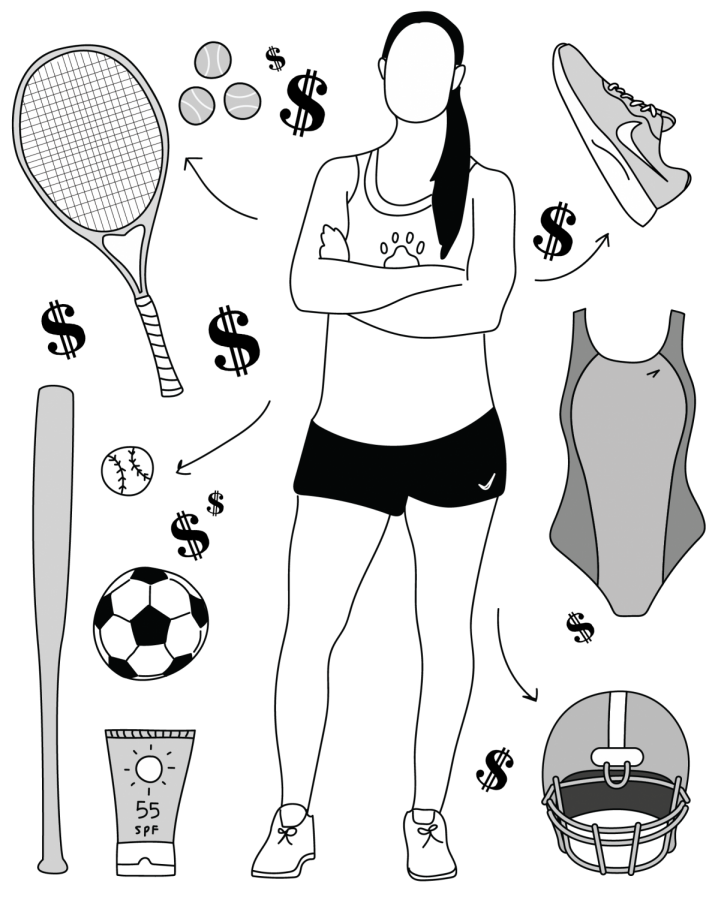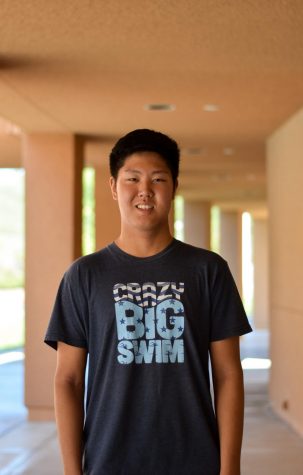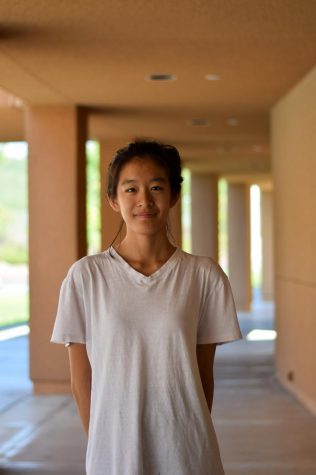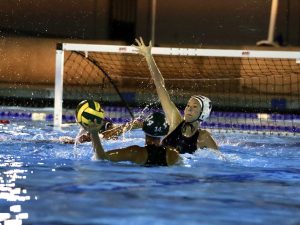The rising costs of competitive athletics: is it ethical?
December 16, 2019
Equipment costs for athletics remain an uncompromising factor in athlete success, regardless of if the athlete is novice or professional.
As the skill level of an athlete rises, so does the cost of the equipment. By the time an athlete reaches high school, students can find themselves spending a substantial amount of money on their equipment, even for their school-sponsored teams— and for good reason. From racquets to goggles to helmets, athlete skill and safety is impeded without the right equipment.
In high school tennis, for example, expenses can reach upwards of $500 a year, covering the cost of racquets, strings, shoes and other items needed to compete. In a sport where each swing risks a breaking string, the budget for equipment maintenance can be unpredictable. And this is after the costs surrounding paying for instruction and buying equipment to begin with.
“Each of my three rackets cost around $200,” Varsity Boys Tennis player senior Trevor Ju said.
In addition to equipment, Ju says that most tennis players spend money on coaches outside of school, averaging around $60 per hour.
Similarly for high school swimming, athletes often are required to go beyond the basic demands of the sport, in order to keep up with the pace of competitive swimming. On average, high school costs are around $200 in order to provide for goggles, swim caps, suits, bags, sunscreen and training equipment. However, many dedicated swimmers attempt to gain an edge in tight races with the help of tech suits, which cost an extra $100.
“As a CIF member, I spend about $310 on all competitive equipment and team gear,” Varsity Swim captain senior Felix Zhu said. “This usually includes a CIF shirt and tech suit.”
Likewise, baseball requires on average $350 per season. Gear includes a bat, which is usually around $200. Helmets cost around $60, and gloves around $80-$100.
Lacrosse runs students about $300. The lacrosse stick, also called the crosse, can be bought in two pieces, the shaft followed by the head. The helmet is the most expensive part of gear since it protects head injuries. As the price increases, gloves tend to be more flexible and breathe easier.
In addition, events such as travel competitions have also demanded quite a lot of spending. This usually includes meals and rides along the trip. Adding that in with private lessons and repair costs, the young athlete world is starting to put a bigger and bigger financial strain on children and their parents.
These rising prices actually threaten the inclusive nature of sports. Participation in sports among families earning less than $75,000 has dropped since 2011, according to The Aspen Institute’s Project Play. The economic gap between athletes results in an “up or out” situation, in which sports begin to lose popularity among lower income individuals or kids who are less willing to spend money for their sport. Between 2011 and 2012, participation in team sports fell to 50% from 54%, for kids ages 6-17, according to Sports & Fitness Industry Association. While it is true that young athletes have more access to training, it is at the cost of a growing excluded group that fails to keep up with the financial demands of high school sports.
Northwood in particular is doing its best to keep athletic prices low via boosters and fundraisers. Athletes are encouraged to take advantage of the athletic opportunities available.



![AAAAAND ANOTHER THING: [CENSORED] [REDACTED] [BABY SCREAMING] [SIRENS] [SILENCE].](https://thehowleronline.org/wp-content/uploads/2025/06/lucy-1200x800.jpg)



















































![AAAAAND ANOTHER THING: [CENSORED] [REDACTED] [BABY SCREAMING] [SIRENS] [SILENCE].](https://thehowleronline.org/wp-content/uploads/2025/06/lucy-300x200.jpg)



